I watched Rafael Nadal practice for two hours yesterday on Rod Laver Arena.
It was Rafa’s second day of practice here at the 2022 Australian Open, and he was hitting with fellow Spaniard, Juame Munar.
Rafa’s level was very solid. I would say he was about an 8/10. After a long flight from Spain, the first couple of days are always focused on getting used to the heat, the balls, and the speed of the court. He definitely achieved that.
I took a short video (1:10) of Rafa practicing backhand returns against second serves. The video is below. He drove the first four backhands and sliced the last three.
Keep in mind that Rafa is the career leader on the ATP Tour with points won vs. 2nd serves, at 55.41% (20,032/36,155) from 1204 matches.
The standout return was the fourth one, which he drove deep through the court really well. It came off his racket extremely fast. What’s interesting is that he had the shortest follow-through on that particular return. The best way to wrap your head around how that happens is to focus on how the energy he created.
If you like this story, also read Roland Garros: Rafael Nadal’s Formidable Forehand
Flowing Energy – Think of Juan Martin del Potro’s forehand. It has a big backswing and a big following through. Lots of size and lots of flow and he hits the cover off the ball. That’s a great way to create energy.
Concentrated Energy – This is what we see on the fourth backhand return. Rafa focused all his energy into contact and reduced the size of the backswing and the follow-through. He was able to use the power of the serve, snap on it quickly, and then relax and shorten the racket after contact. Go fast over a short distance. It works a treat for returns.
Here’s the video. Pay particular attention to the fourth return.
10-Step 2nd Serve Return Sequence
The following breakdown comes from the fourth return in the video.
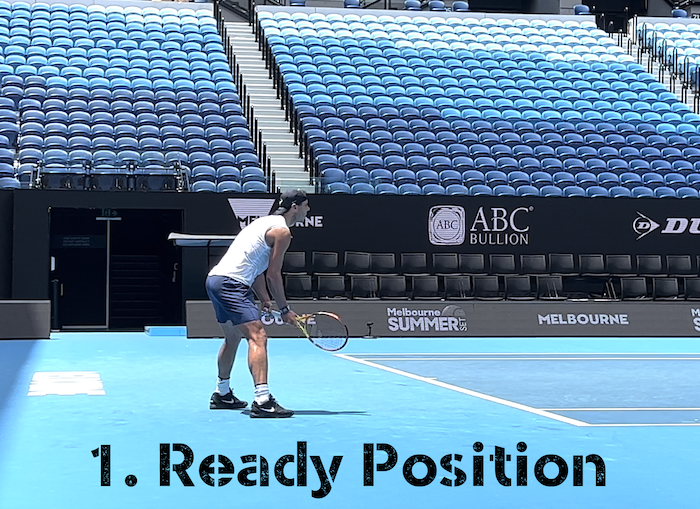
- Rafa does not get as wide as Novak. There is more bend from his hips than his knees. That’s just his style, and it’s perfectly fine.
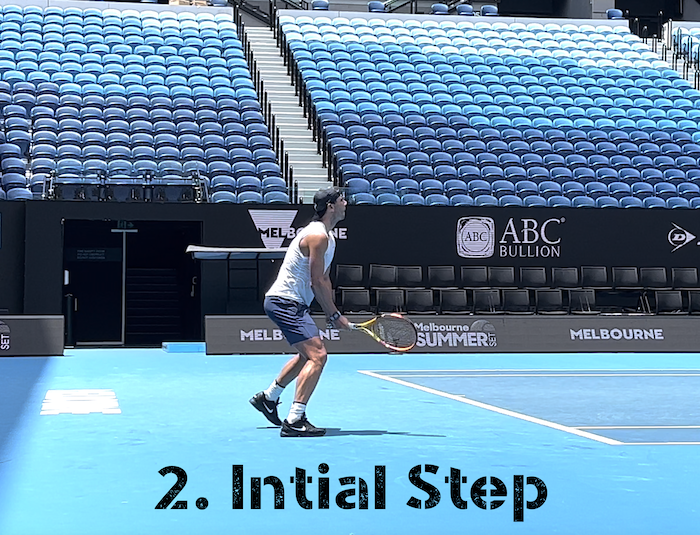
- The key here is knowing this is a 2nd serve return. That’s why he has two steps forward. The first is just to get the momentum rolling forward.
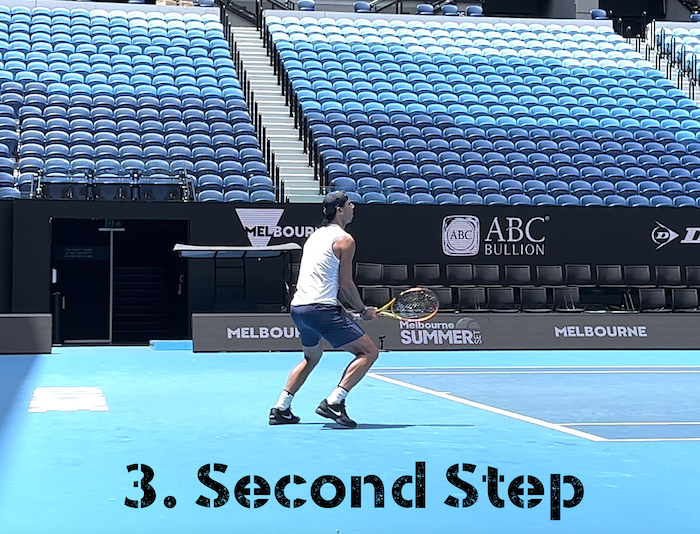
- This is where the timing really kicks in with the toss from the server. The step is happening as the toss is going into the air.
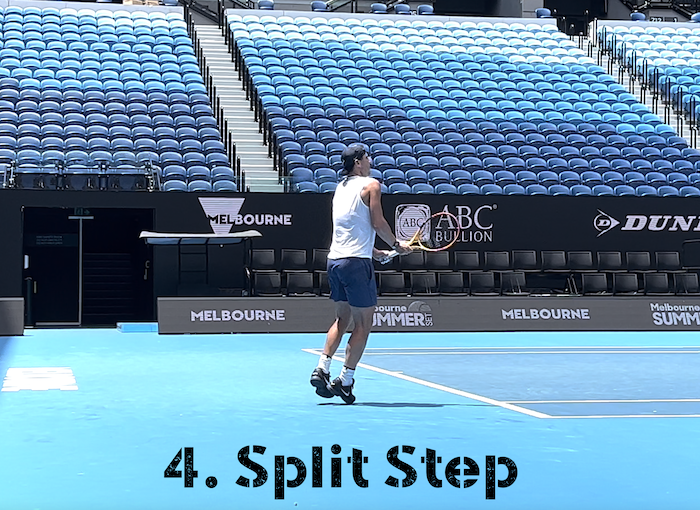
- The server is making contact with the serve right now. It’s interesting that Rafa is not wider with his feet like Novak would be. It’s a result of not starting wider in the first place.
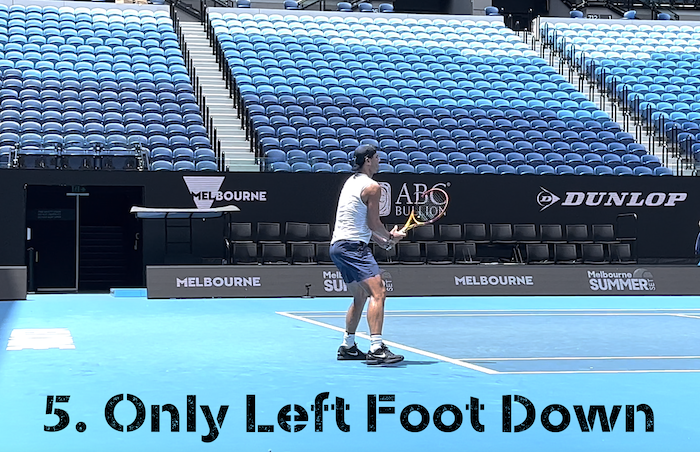
- This is interesting! Most players are going to land with their two feet and then step to the ball. I looked at the video closely and could not see Rafa’s right foot touching the ground. As he comes down from the split step, he sees the ball going wide to his backhand so he only lands on his left foot to push wide to the backhand side. That’s extremely efficient and quick!
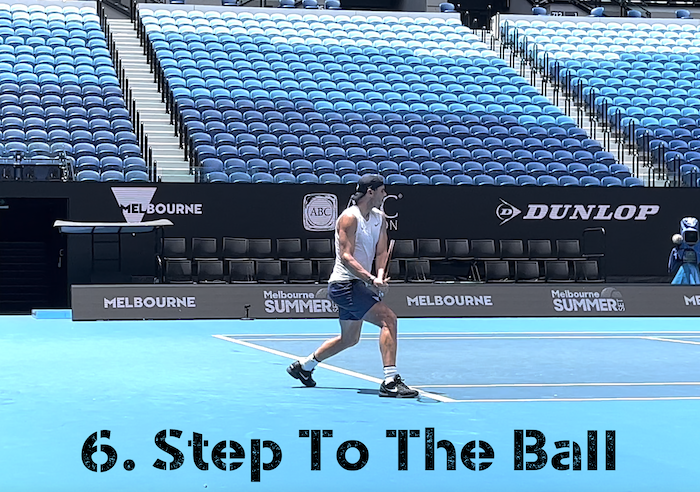
- This is the first time Rafa’s right foot hits the ground after picture three. He takes a big step to his right to position his body behind the ball with the right spacing to the incoming serve.
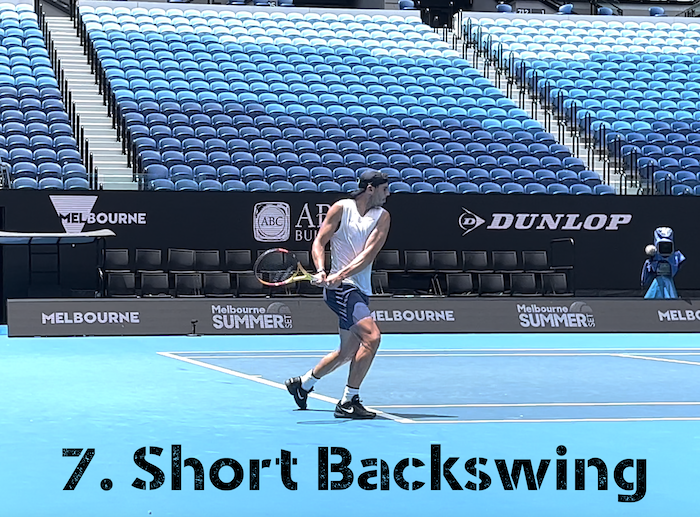
- Take a good, long look at the size of his backswing. It’s extremely short, right off his hip. The goal is to keep things as simple as possible so less can break down under pressure. This picture drips of simplicity.
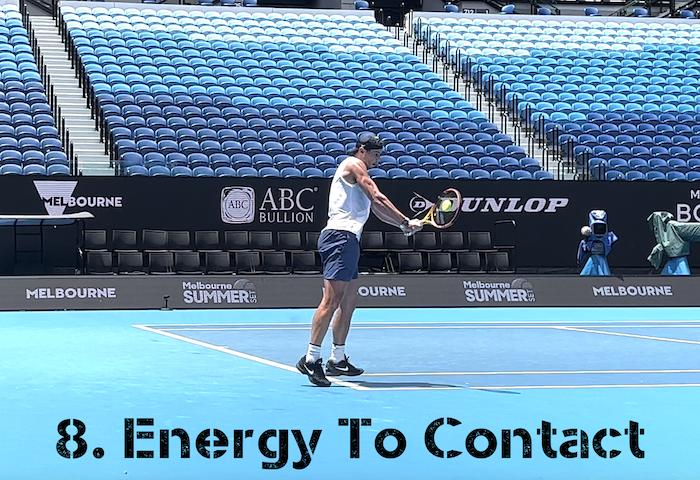
- The racket is really motoring at this stage from a short backswing. He is leaning on the ball and using all the power possible from his legs and upper body to simultaneously stay as balanced as possible and also deliver energy.
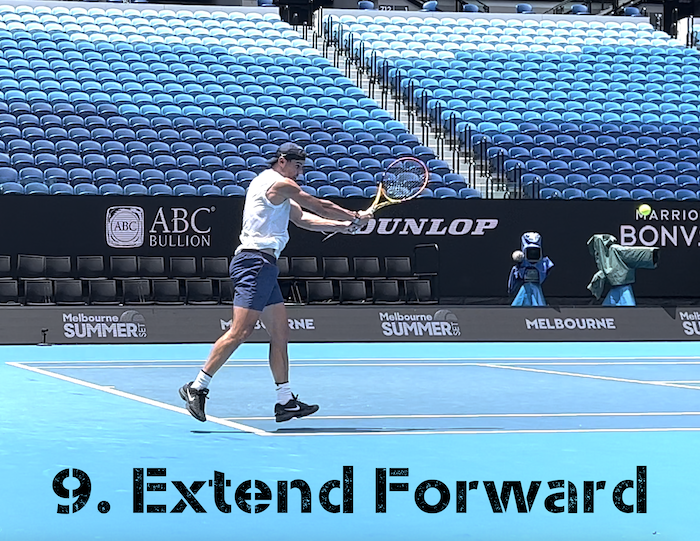
- This is a picture that players at all levels of the game need to copy. The follow-through will be short (next pic) but he does a great job of driving through the ball. This return exploded off the strings back cross court. It was a frozen rope and would have been a return winner in a match.
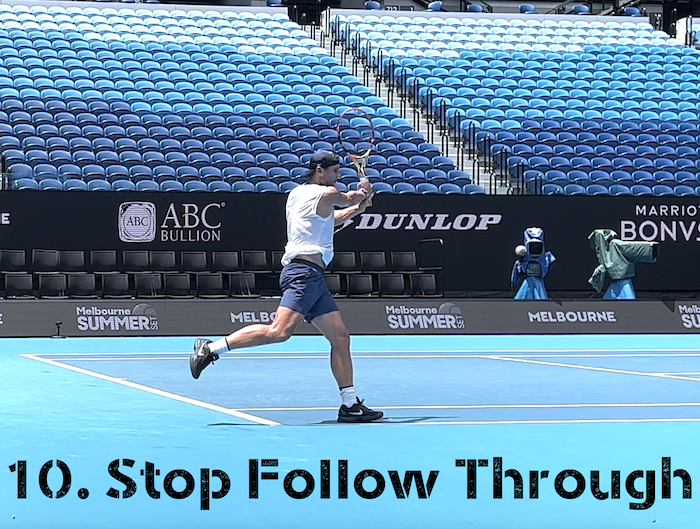
- This is the full extent of the follow-through. There is no wrapping over his shoulder at all from here. Shortening the follow-through helps concentrate all the energy of the swing into contact. It creates an explosion of energy that is timed to perfection.
SUMMARY
The beginning of the sequence is all about triggering forward momentum with the initial two steps and timing the split step to coincide with contact from the server. Then it is all about being short and compact and exploding into contact. It’s simple and lethal. Snap on the ball!
Lots to copy for your own game!
Cheers from Melbourne.
Craig
If you liked this story, also read Rafael Nadal: Ad Court Serve Secrets Exposed
